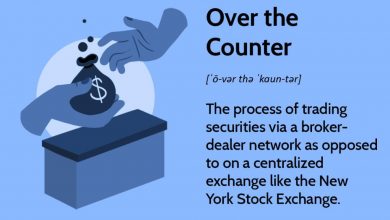The Role of Cryptocurrencies in Hyperinflationary Economies

The Role of Cryptocurrencies in Hyperinflationary Economies
Understanding Hyperinflation
Hyperinflation occurs when a country’s inflation rate skyrockets, causing the national currency to rapidly lose its value. This phenomenon can have catastrophic effects on the economy, leading to skyrocketing prices, shortages of essential goods, and a loss of confidence in traditional fiat currencies. However, in the midst of this financial crisis, cryptocurrencies have emerged as a potential solution.
The Advantages of Cryptocurrencies During Hyperinflation
During hyperinflation, cryptocurrencies offer several advantages over traditional fiat currencies. Here’s a closer look at what sets them apart:
Decentralization and Protection from Government Control
Unlike traditional currencies that are controlled by central banks and governments, cryptocurrencies operate on decentralized networks. This means that no single entity can manipulate the value or supply of cryptocurrencies, making them immune to the inflationary policies often implemented by governments during times of hyperinflation.
Accessibility and Digital Portability
Cryptocurrencies are digital assets that can be accessed and transferred instantly through the internet. This accessibility makes them an ideal medium of exchange during hyperinflation, where physical currencies may become scarce or unstable. With cryptocurrencies, individuals can securely store and transfer their wealth without relying on physical cash.
Stability and Store of Value
While fiat currencies can rapidly lose their value during hyperinflation, cryptocurrencies can provide stability. Cryptocurrencies like Bitcoin and Ethereum, known for their limited supply and built-in monetary policies, can serve as a reliable store of value and hedge against hyperinflation.
Frequently Asked Questions (FAQs) about Cryptocurrencies in Hyperinflationary Economies
Q1: Are cryptocurrencies legal during hyperinflation?
A1: The legality of cryptocurrencies during hyperinflation varies from country to country. Some governments embrace cryptocurrencies as an alternative to their struggling fiat currencies, while others may impose restrictions. It’s essential to research the legal framework in your country before engaging in cryptocurrency activities.
Q2: Can cryptocurrencies completely replace fiat currencies during hyperinflation?
A2: While cryptocurrencies can offer an alternative to traditional currencies during hyperinflation, their widespread adoption as a replacement remains uncertain. Factors such as government regulation and public acceptance play a significant role in determining the future role of cryptocurrencies in hyperinflationary economies.
Q3: How can individuals protect their investments in cryptocurrencies during hyperinflation?
A3: To protect investments in cryptocurrencies during hyperinflation, individuals can follow some best practices:
1. Diversify holdings: Invest in a portfolio of different cryptocurrencies to spread risk.
2. Use secure wallets: Store cryptocurrencies in offline wallets or hardware wallets to protect against hacking or theft.
3. Stay informed: Keep up-to-date with news and developments in both the cryptocurrency and hyperinflationary economic sectors.
Conclusion
In hyperinflationary economies, cryptocurrencies can provide individuals with financial stability and a source of exchange outside the reach of governments. Their decentralization, accessibility, and store of value properties make them an attractive option for those looking for alternatives to devalued fiat currencies. However, it is important to consider the legal and regulatory aspects before venturing into cryptocurrencies during times of hyperinflation.
Remember to consult with a financial advisor and stay informed about the latest developments in this rapidly evolving space.



